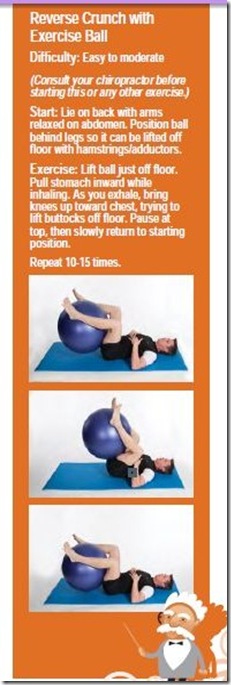Thursday, January 17, 2013
Monday, January 14, 2013
Chiropractic: Keeping Kids & Teens Active and Vital
Chiropractors treat children and teenagers for a wide variety of health problems, from back and neck pain to posture imbalances to acute musculoskeletal injuries. Children and adolescents
constitute a significant number of patients in chiropractic offices. A 2000 study published in the journal Archives of Pediatrics and Adolescent Medicine states that approximately 420,000
pediatric chiropractic visits were made in one year (1998) in the Boston metropolitan area alone. Because of the family-oriented nature of many chiropractic clinics, chiropractors are in
an excellent position to provide appropriate care throughout the lifespan, including during those formative years of childhood and adolescence.
Back and Neck Pain in Children
Back and neck pain are common health complaints among children and adolescents. According to a 2002 study published in the British Medical Journal, 8 percent of girls and 7 percent of boys in Finland (both age 14) experience low back pain, and neck
and shoulder pain affects 24 percent of girls and 12 percent of boys 14 years of age. This study also notes that low back and neck pain is becoming increasingly common in children and adolescents, which suggests an increase in degenerative musculoskeletal conditions in future adults.
Another study published in the journal Spine notes that the prevalence of low back pain increases sharply in the early teen years and that by the age of 18 (girls) and 20 (boys) over 50
percent experience at least one bout of low back pain.3 The author of this study states that an examination of the causes and prevention of low back pain should focus on childhood and adolescence. There is a clear role for chiropractic in reducing or preventing back and neck pain in children and teens through targeted treatment approaches and education about the importance of posture and other musculoskeletal health topics.
Establishing Lifelong Health Habits
It is important for children to establish beneficial health habits at an early age, as lasting health habits public health throughout the lifespan are usually solidified during youth. A 2012 article published in the Journal of Manipulative and Physiological
Therapeutics states that encouraging a healthy level of physical activity in children and teens is crucial for improving public health and that optimizing musculoskeletal health is essential for achieving lifelong health of an individual.4 Ensuring that your
child’s injuries are dealt with swiftly and appropriately is one of the most effective ways to reduce their likelihood of developing musculoskeletal problems as adults, improve their quality of life and give them the confidence they need to pursue the physical activities of their choosing.
Breaking Down Barriers to Physical Activity
Children may experience physical activity-related injuries at school, during community organized sports events, or through other active leisure activities. A 2006 study published in the journal Pediatrics states that a significant percentage of childhood
injuries happen while children are participating in physical activity. These injuries may become a barrier to future participation in physical activities and the development of healthy exercise habits. Decreased physical activity levels can have a profound effect on health over time, and sedentary living may lead to diabetes, cardiovascular disease and other lifestyle conditions. Your chiropractor understands the importance of eliminating this common - and powerful - barrier to physical activity and he or she will work with your child to keep him or her active and vital.
Important Action Steps
Reducing musculoskeletal injuries in children and adolescents is a public health challenge that chiropractors are well-suited to handle, though additional help from parents, researchers and politicians may be helpful in improving outcomes. Three key action steps, notes Lise Hestbaek, DC, PhD, are necessary to prevent musculoskeletal injuries in youth and keep them active and vital, including improving public awareness (especially among parents) about the urgency and seriousness of children’s musculoskeletal complaints, creating an evidence base for optimal treatment approaches to pediatric musculoskeletal problems and establishing screening tests to identify youth most at risk for musculoskeletal injuries. Talk with your chiropractor to
learn more about how you can identify and prevent common musculoskeletal ailments in your children.






